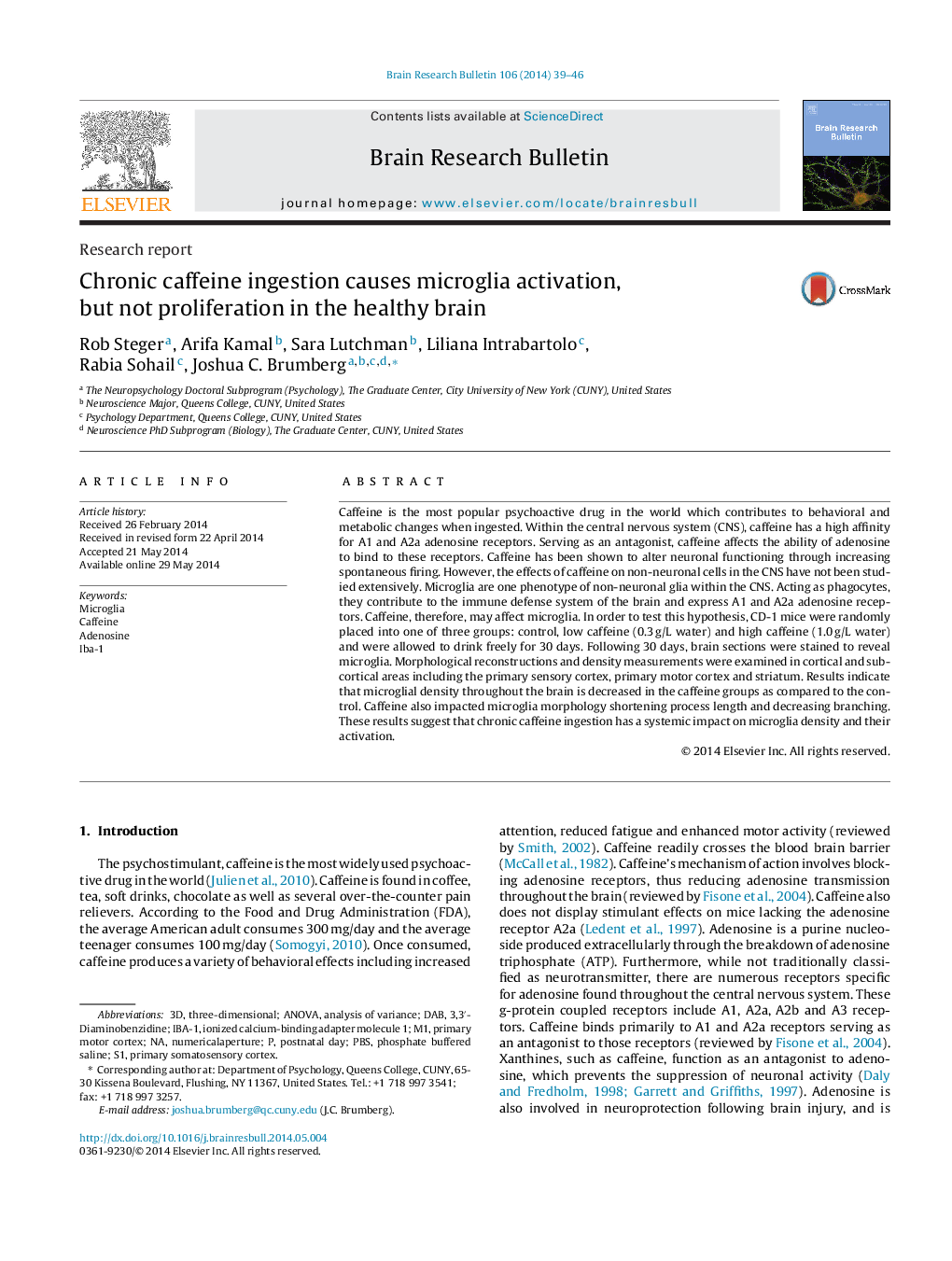| Article ID | Journal | Published Year | Pages | File Type |
|---|---|---|---|---|
| 4318799 | Brain Research Bulletin | 2014 | 8 Pages |
•Caffeine impacts microglia in both cortical and subcortical regions.•Caffeine led to lower microglia densities throughout the brain.•Caffeine transitions microglia into what appears to be an active state.
Caffeine is the most popular psychoactive drug in the world which contributes to behavioral and metabolic changes when ingested. Within the central nervous system (CNS), caffeine has a high affinity for A1 and A2a adenosine receptors. Serving as an antagonist, caffeine affects the ability of adenosine to bind to these receptors. Caffeine has been shown to alter neuronal functioning through increasing spontaneous firing. However, the effects of caffeine on non-neuronal cells in the CNS have not been studied extensively. Microglia are one phenotype of non-neuronal glia within the CNS. Acting as phagocytes, they contribute to the immune defense system of the brain and express A1 and A2a adenosine receptors. Caffeine, therefore, may affect microglia. In order to test this hypothesis, CD-1 mice were randomly placed into one of three groups: control, low caffeine (0.3 g/L water) and high caffeine (1.0 g/L water) and were allowed to drink freely for 30 days. Following 30 days, brain sections were stained to reveal microglia. Morphological reconstructions and density measurements were examined in cortical and subcortical areas including the primary sensory cortex, primary motor cortex and striatum. Results indicate that microglial density throughout the brain is decreased in the caffeine groups as compared to the control. Caffeine also impacted microglia morphology shortening process length and decreasing branching. These results suggest that chronic caffeine ingestion has a systemic impact on microglia density and their activation.
